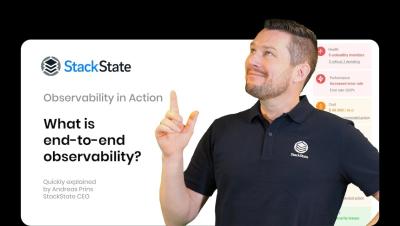Observability Unpacked: 5 Takeaways From KubeCon + CloudNativeCon 2024
StackState had a blast at this year's KubeCon + CloudNativeCon gathering in Paris! The discussions were in-depth, covering a wide array of topics and lasting much longer than in the past. This year, attendees seemed to have a considerably deeper understanding of the cloud-native ecosystem, probably attributed to its rapid growth. We also noticed a pretty dramatic evolutionary shift in the vendors at the expo hall, who were showcasing some truly progressive specialized solutions.




